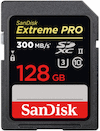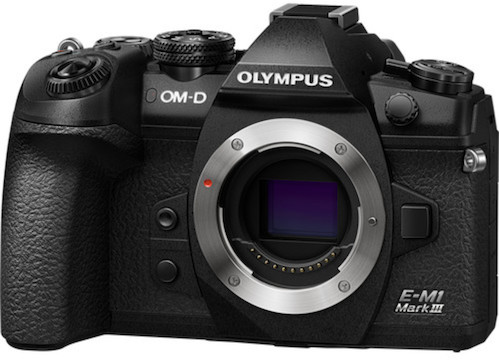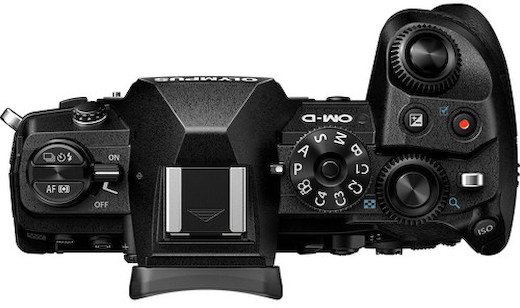Olympus OM-D E-M1 Mark III
Includes
- Olympus OM-D E-M1 Mark III
- Olympus BLH-1 Battery
- Olympus BCH-1 Charger
- Non-Polarized Cable
- Camera Strap
Recommended:
SDXC Media
Lenses
Power
TB4 Cables
Available Today
Available Today

Available Today
Available Today

Available Today
Available Today

Available Today
Available Today

Available Today
Available Today

Available Today
Available Today

Available Today
Available Today

Available Today
Available Today

Available Today
Available Today

Available Today
Available Today

Available Today
Available Today

Available 05/01/25
Available 05/01/25

Available Today
Available Today

Available Today
Available Today

Available Today
Available Today

Available Today
Available Today

Available Today
Available Today

Available Today
Available Today

Available Today
Available Today

Available Today
Available Today

Available Today
Available Today

Available Today
Available Today

Available 05/27/25
Available 05/27/25

Available Today
Available Today

Available Today
Available Today

Olympus OM-D E-M1 Mark III
The Olympus OM-D E-M1 Mark III is a fast, versatile, compact Micro 4/3 camera, and an update to the Olympus OM-D E-M1 Mark II. Key features include:
20.4MP Live MOS sensor; TruePic IX image processor
4K video capture in 17:9 DCI and 16:9 UHD
Feature-rich phase-detection autofocus system
Five-axis sensor-shift image stabilization system
What’s Changed? While the Olympus OM-D E-M1 Mark III retains many attributes found in its predecessor, the Olympus OM-D E-M1 Mark II, it also gains some features from its less-compact sibling, the Olympus OM-D E-M1X. Most notably, it features an updated TruePic IX image processor, an improved image-stabilization system, a faster still-shooting rate, and improved weather sealing.
20.4MP Live MOS Sensor. The E-M1 III offers continuous RAW shooting at 60 fps when working with the silent shutter and single-shot autofocus, and up to 18 fps using continuous autofocus. With the mechanical shutter, you can reach up to 15 fps with single-shot AF. The TruePic IX image processor allows ISO ranges all the way up to 25,600.
4K Video. The E-M1 Mark III gives you both flavors of 4K video: 17:9 DCI and 16:9 UHD. DCI records at a true 24.00p with a super-high 237 Mbps bit-rate, while UHD is available at 24p or 30 and 102 Mbps. There’s a built-in stereo mic to capture scratch audio, or you can use the 3.5mm external mic jack to record. There’s even a headphone jack included so you can monitor everything.
Pro Capture. Pro Capture is basically a buffering system for stills. With a half-press of the shutter button, the camera starts taking full resolution JPEGs or RAW images. A full button press saves the current image and the previous 35 frames. If you hold the shutter button in this mode, you can shoot continuously using the silent electronic shutter.
Phase-Detection Autofocus System. The lightning-quick autofocus system combines 121 contrast-detection points and 121 phase-detection points. The 121 phase-detection points are cross-type for more precise tracking in poorly lit conditions and better subject tracking capabilities. You get an array of specialized focusing modes, each of which is designed to work in different shooting situations. For example, the Face Priority and Eye Priority AF modes are particularly suited to portraiture, while Starry Sky AF mode helps you focus on stars and other objects in the night sky.
Image Stabilization. The five-axis sensor-shift image stabilization system accounts for 7 stops of shake in basically all directions, keeping your image rock solid when you’re shooting handheld. When paired with select lenses with optical image stabilization, the system can compensate for up to 7.5 stops.
Built-In Wi-Fi. Built-in Wi-Fi and Bluetooth offer simple connections to smartphones and tablets. This allows you to share images, view and download images, and make camera exposure and focus adjustments on the device while shooting, all via the OM Image Share app for iOS and Android.
Design and Features. For framing and composition, there’s a 2.36m-dot 0.74x electronic viewfinder and a 3.0-inch 1.04m vari-angle rear touchscreen LCD. The body is magnesium alloy, making it light and strong. It’s weather sealed and good in the cold down to 14°F. Images and videos are recorded to SDXC cards in dual slots, but do note only slot 1 supports UHS-II cards. The BLH-1 battery is rated for up to 420 shots per charge with normal settings or up to 900 shots per charge with the Quick Sleep Mode activated.
Q & A
This rental doesn’t include the cable clip. If you’d like it, please request it in the Special Instructions box during checkout.
Specifications
| Aspect Ratio | 4:3 |
| Audio File Formats | Linear PCM (Stereo) |
| Audio Recording | Built-In Microphone (Stereo) |
| Autofocus Points | Phase Detection: 121 (121 Cross-Type) |
| Autofocus Sensitivity | -3.5 to +20 EV |
| Battery | 1x BLH-1 Rechargeable Lithium-Ion, 7.4 VDC, 1720 mAh (Approx. 420 Shots) |
| Bit Depth | 12-Bit |
| Brand | Olympus |
| Built-in Flash | No |
| Camera Mount | Micro 4/3 |
| Camera Type | Mirrorless |
| Category | Photo |
| Continuous Shooting | Mechanical Shutter |
| Dedicated Flash System | TTL |
| Depth | 2.7" |
| Diopter Adjustment | -4 to +2 |
| Exposure Compensation | -5 to +5 EV (1/3, 1/2, 1 EV Steps) |
| Exposure Modes | Aperture Priority, Manual, Program, Shutter Priority |
| External Flash Connection | Hot Shoe, PC Terminal |
| External Video-Recording Modes | 4:2:2 8-Bit |
| Flash Compensation | -3 to +3 EV (1/3, 1/2, 1 EV Steps) |
| Flash Modes | Fill Flash, First-Curtain Sync, Manual, Off, Red-Eye Reduction, Second-Curtain Sync, Slow Sync, Slow Sync/Red-Eye Reduction |
| Focus Modes | Continuous-Servo AF, Manual Focus, Single-Servo AF |
| Focus Type | Auto and Manual Focus |
| GPS | No |
| Height | 3.6" |
| ISO Range | Auto, 200 to 25600 |
| Image File Formats | JPEG, RAW |
| Image Stabilization | Sensor-Shift, 5-Axis |
| Inputs/Outputs | USB Type-C (USB 3.0), HDMI D (Micro), 3.5mm Headphone, 3.5mm Microphone, 2.5mm Sub-Mini, PC Sync Socket |
| Interval Recording | Yes |
| Item Type | Camera |
| Maximum Resolution | 5184 × 3888 |
| Maximum Sync Speed | 1/250 Second |
| Memory Card Slot | Slot 1: SD/SDHC/SDXC (UHS-II) |
| Metering Modes | Center-Weighted Average, Multi-Zone, Spot |
| Metering Range | -2 to 20 EV |
| Monitor Resolution | 1,037,000 Dot |
| Monitor Size | 3" |
| Monitor Type | Articulating Touchscreen LCD |
| Mount | Micro 4/3rds |
| Operating Temperature | 14 to 104°F / -10 to 40°C |
| Pixels | Actual: 21.8 Megapixel |
| Recording Limit | Up to 29 Minutes |
| Self Timer | 2/12-Second Delay |
| Sensor Dimensions | 17.4 × 13mm |
| Sensor Size | Micro 4/3rds |
| Sensor Type | MOS |
| Shutter Speed | Mechanical Shutter |
| Video Encoding | NTSC/PAL |
| Video Recording Modes | MOV/H.264 |
| Viewfinder Coverage | 100% |
| Viewfinder Eye Point | 21mm |
| Viewfinder Magnification | Approx. 0.74x |
| Viewfinder Resolution | 2,360,000 Dot |
| Viewfinder Type | Electronic (OLED) |
| Weight | 1.28 lbs. |
| White Balance | Auto, Cloudy, Custom, Flash, Fluorescent, Incandescent, Kelvin, Shade, Sunlight, Underwater |
| Width | 5.3" |
| Wireless | Wi-Fi |
Includes
- Olympus OM-D E-M1 Mark III
- Olympus BLH-1 Battery
- Olympus BCH-1 Charger
- Non-Polarized Cable
- Camera Strap
Specifications
| Aspect Ratio | 4:3 |
| Audio File Formats | Linear PCM (Stereo) |
| Audio Recording | Built-In Microphone (Stereo) |
| Autofocus Points | Phase Detection: 121 (121 Cross-Type) |
| Autofocus Sensitivity | -3.5 to +20 EV |
| Battery | 1x BLH-1 Rechargeable Lithium-Ion, 7.4 VDC, 1720 mAh (Approx. 420 Shots) |
| Bit Depth | 12-Bit |
| Brand | Olympus |
| Built-in Flash | No |
| Camera Mount | Micro 4/3 |
| Camera Type | Mirrorless |
| Category | Photo |
| Continuous Shooting | Mechanical Shutter |
| Dedicated Flash System | TTL |
| Depth | 2.7" |
| Diopter Adjustment | -4 to +2 |
| Exposure Compensation | -5 to +5 EV (1/3, 1/2, 1 EV Steps) |
| Exposure Modes | Aperture Priority, Manual, Program, Shutter Priority |
| External Flash Connection | Hot Shoe, PC Terminal |
| External Video-Recording Modes | 4:2:2 8-Bit |
| Flash Compensation | -3 to +3 EV (1/3, 1/2, 1 EV Steps) |
| Flash Modes | Fill Flash, First-Curtain Sync, Manual, Off, Red-Eye Reduction, Second-Curtain Sync, Slow Sync, Slow Sync/Red-Eye Reduction |
| Focus Modes | Continuous-Servo AF, Manual Focus, Single-Servo AF |
| Focus Type | Auto and Manual Focus |
| GPS | No |
| Height | 3.6" |
| ISO Range | Auto, 200 to 25600 |
| Image File Formats | JPEG, RAW |
| Image Stabilization | Sensor-Shift, 5-Axis |
| Inputs/Outputs | USB Type-C (USB 3.0), HDMI D (Micro), 3.5mm Headphone, 3.5mm Microphone, 2.5mm Sub-Mini, PC Sync Socket |
| Interval Recording | Yes |
| Item Type | Camera |
| Maximum Resolution | 5184 × 3888 |
| Maximum Sync Speed | 1/250 Second |
| Memory Card Slot | Slot 1: SD/SDHC/SDXC (UHS-II) |
| Metering Modes | Center-Weighted Average, Multi-Zone, Spot |
| Metering Range | -2 to 20 EV |
| Monitor Resolution | 1,037,000 Dot |
| Monitor Size | 3" |
| Monitor Type | Articulating Touchscreen LCD |
| Mount | Micro 4/3rds |
| Operating Temperature | 14 to 104°F / -10 to 40°C |
| Pixels | Actual: 21.8 Megapixel |
| Recording Limit | Up to 29 Minutes |
| Self Timer | 2/12-Second Delay |
| Sensor Dimensions | 17.4 × 13mm |
| Sensor Size | Micro 4/3rds |
| Sensor Type | MOS |
| Shutter Speed | Mechanical Shutter |
| Video Encoding | NTSC/PAL |
| Video Recording Modes | MOV/H.264 |
| Viewfinder Coverage | 100% |
| Viewfinder Eye Point | 21mm |
| Viewfinder Magnification | Approx. 0.74x |
| Viewfinder Resolution | 2,360,000 Dot |
| Viewfinder Type | Electronic (OLED) |
| Weight | 1.28 lbs. |
| White Balance | Auto, Cloudy, Custom, Flash, Fluorescent, Incandescent, Kelvin, Shade, Sunlight, Underwater |
| Width | 5.3" |
| Wireless | Wi-Fi |
Pricing Chart
Lensrentals.com offers rentals ranging in length from 1 to 90 days. The shopping cart will automatically update the quoted price as you adjust the length of your rental. Our most common rental periods are shown below:
| Rental Period | Lenscap+ | Rental Price | Total Price | Price Per Day (Approx.) |
|---|---|---|---|---|
| 3 days | $15.00 | $67.00 | $82.00 | $27.33 |
| 4 days | $16.00 | $71.00 | $87.00 | $21.75 |
| 7 days | $21.00 | $95.00 | $116.00 | $16.57 |
| 10 days | $28.00 | $128.00 | $156.00 | $15.60 |
| 14 days | $37.00 | $166.00 | $203.00 | $14.50 |
| 21 days | $49.00 | $223.00 | $272.00 | $12.95 |
| 30 days | $62.00 | $280.00 | $342.00 | $11.40 |
| 45 days | $81.00 | $366.00 | $447.00 | $9.93 |
| 60 days | $95.00 | $428.00 | $523.00 | $8.72 |
| 90 days | $122.00 | $551.00 | $673.00 | $7.48 |
| Rental Period | Lenscap | Rental Price | Total Price | Price Per Day (Approx.) |
|---|---|---|---|---|
| 3 days | $10.00 | $67.00 | $77.00 | $25.67 |
| 4 days | $11.00 | $71.00 | $82.00 | $20.50 |
| 7 days | $14.00 | $95.00 | $109.00 | $15.57 |
| 10 days | $19.00 | $128.00 | $147.00 | $14.70 |
| 14 days | $25.00 | $166.00 | $191.00 | $13.64 |
| 21 days | $33.00 | $223.00 | $256.00 | $12.19 |
| 30 days | $41.00 | $280.00 | $321.00 | $10.70 |
| 45 days | $54.00 | $366.00 | $420.00 | $9.33 |
| 60 days | $63.00 | $428.00 | $491.00 | $8.18 |
| 90 days | $81.00 | $551.00 | $632.00 | $7.02 |
| Rental Period | Rental Price | Price Per Day (Approx.) |
|---|---|---|
| 3 days | $67.00 | $22.33 |
| 4 days | $71.00 | $17.75 |
| 7 days | $95.00 | $13.57 |
| 10 days | $128.00 | $12.80 |
| 14 days | $166.00 | $11.86 |
| 21 days | $223.00 | $10.62 |
| 30 days | $280.00 | $9.33 |
| 45 days | $366.00 | $8.13 |
| 60 days | $428.00 | $7.13 |
| 90 days | $551.00 | $6.12 |
Shipping Rates
Return shipping is included in the shipping price, and we include a prepaid return label with your order - all you need to do is bring it to an appropriate drop-off location when your rental is complete.
Enter shipping zip code
| FedEx 2Day | $25.00 shipping |
| FedEx Standard Overnight | $38.00 shipping |
| UPS Ground | $25.00 shipping |
| UPS Next Day Air | $48.00 shipping |
Diagrams
Olympus OM-D E-M1 Mark III
Rental
















